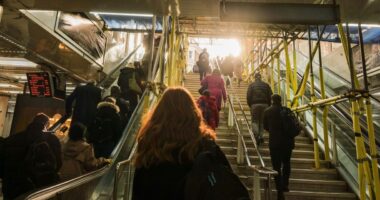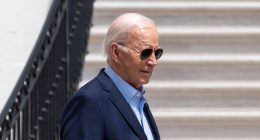
Filings for jobless claims rose sharply from near the lowest levels on record, as workers and businesses contend with Omicron-related disruptions in a tight labor market.
Initial claims for unemployment benefits, a proxy for layoffs, rose to 286,000 during the week that ended on Jan. 15, following an increase for the week ended Jan. 8, the Labor Department said Thursday. The four-week average, which smooths out volatility, was 231,000, an increase of 20,000 from last week’s average.
Upticks in claims at the start of the year related to pandemic disruptions or seasonal factors don’t portend a reversal in the labor market’s progress, said Nela Richardson, an economist at the human-resources software firm Automatic Data Processing Inc.
“As we have gotten lower and lower in jobless claims, we should expect some volatility,” she said. “It’s never a straight line.”
“Someone who’s dependable, who’s been on the job for a year and doesn’t need to learn the ropes—you don’t want to lay that person off when you’re expecting a spring thaw” in economic activity, she added.
Wages grew by 4.7% in 2021, and the unemployment rate has dropped to 3.9%, according to the Labor Department. American workers were quitting an average of more than four million jobs a month during the second half of last year through November. The tight labor market has given lower-wage workers, in particular, increased leverage in the workplace.
Quits and job openings are reported with a several-week lag, and there is some evidence that the surge in Omicron cases has slowed growth in job postings by employers, according to the jobs site Indeed.
While the number of job postings is still around 60% higher than the pre-pandemic baseline, the weekly average dropped by 1.3 percentage points for the week ended Jan. 14. Indeed economist AnnElizabeth Konkel attributed that drop to two factors: Lots of people are out sick, including employers tasked with making hiring decisions, and “uncertainty about consumer demand means it’s hard for businesses to determine how many workers to hire.”
A complicating factor for employers and policy makers is the labor-force participation rate, which measures the share of the working-age population that is either employed or seeking employment. Though it has ticked up in recent months to 61.9%, it remains below the 63.4% level from February 2020.
Reduced savings and a rising share of household debt relative to income may bring more workers off the sidelines, especially given the expiration of many federal support programs, including enhanced unemployment benefits and more recently the beefed-up child tax credit, which Congress hasn’t extended.
“What’s missing in action here is any scent of federal stimulus which might delay a person’s decision to go back to work. That’s going to catch up to working families,” Ms. Richardson said.
The Federal Reserve, meanwhile, is attempting to chart a course out of the worst inflationary period in four decades. Part of the process involves trying to pinpoint when the labor market is truly out of slack and has hit full employment, or whether more workers are likely to return to the workforce as pandemic worries like the threat of infection, inconsistent child-care availability and reduced service-sector demand dissipate.
“If Omicron is truly the last major wave of the pandemic and life returns to normal by March, the second quarter should see a solid rebound in economic activity,” said David Kelly, chief global strategist for JPMorgan Funds. “However, if Covid lingers, it could continue to restrain leisure and entertainment spending and labor supply throughout the year.”
Write to Gabriel T. Rubin at [email protected]
Copyright ©2022 Dow Jones & Company, Inc. All Rights Reserved. 87990cbe856818d5eddac44c7b1cdeb8
This post first appeared on wsj.com









